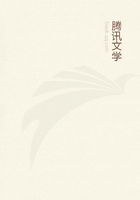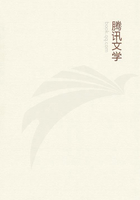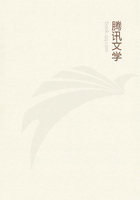Prance, who denied everything, was hurried to Newgate, and thrown, without bed or covering, into the freezing 'condemned hole,' where he lay perishing of cold through the night of December 21, December 22, and the night of that day. On December 23, he offered, no wonder, to confess. He was examined by the Lords, and (December 24) by the Council.
Prance knew, all the world knew, the details about Godfrey's bruises; the state of his neck, and the sword-thrusts. He knew that Bedloe had located the murder in Somerset House. As proclamations for the men accused by Bedloe had long been out, he MAY have guessed that Le Fevre, Walsh, and Pritchard were wanted for Godfrey's murder, and had been denounced by Bedloe. But this is highly improbable, for nothing about Godfrey's murder is hinted at in the proclamation for Le Fevre, Walsh, and Pritchard.* We have no reason, then, to suppose that Prance knew who the men were that Bedloe had accused; consequently he had to select other victims, innocent men of his acquaintance. But, as a tradesman of the Queen, Prance knew her residence, Somerset House, the courts, outer stairs, passages, and so on. He knew that Bedloe professed to have recognised him there in the scene of the dark lantern.
*Lords' Journals, xiii. p. 346; Lords' MSS., p. 59.
Prance had thus all the materials of a confession ready made, but not of a confession identical with Bedloe's. He was 'one of the most acute and audacious of the Jesuit agents,' says Mr. Pollock.*
Yet Mr. Pollock argues that for Prance to tell the tale which he did tell, in his circumstances of cold and terror, required a most improbable 'wealth of mental equipment,' 'phenomenal powers of memory, imagination, and coolness,' if the tale was false.**
Therefore Prance's story of the murder was true, except in the details as to the men whom he accused. On December 24, he was taken to the places which he described (certainly lying in his tale), and preserved consistency, though, after long search, he could not find one of the rooms in which he said that the corpse was laid.***
*Pollock,p.166.
**Ibid. p. 146.
***Lords' Journals, xii. pp. 436-438.
As Prance, by Mr. Pollock's theory, was one of the most acute of Jesuit agents, and as he had all the materials, and all the knowledge necessary for a confession, he had, obviously, no difficulty in making up his evidence. Even by Mr. Pollock's showing, he was cool and intellectual enough; for, on that showing, he adapted into his narrative, very subtly, circumstances which were entirely false. If, as Mr. Pollock holds, Prance was astute enough to make a consistent patchwork of fact and lie, how can it be argued that, with the information at his command, he could not invent a complete fiction?
Again, Prance, by misstating dates wildly, hoped, says Mr. Pollock, to escape as a mere liar.* But, when Prance varied in almost every detail of time, place, motive, and person from Bedloe, Mr. Pollock does not see that his own explanation holds for the variations. If Prance wished to escape as a babbling liar, he could not do better than contradict Bedloe. He DID, but the Protestant conscience swallowed the contradictions. But again, if Prance did not know the details of Bedloe's confession, how could he possibly agree with it?
*Pollock, p. 160.
The most essential point of difference was that Bedloe accused 'Jesuits,' Le Fevre, Walsh, and Pritchard, who had got clean away.
Prance accused two priests, who escaped, and three hangers on of Somerset House, Hill, Berry (the porter), and Green. All three were hanged, and all three confessedly were innocent. Mr. Pollock reasons that Prance, if guilty (and he believes him guilty), 'must have known the real authors' of the crime, that is, the Jesuits accused by Bedloe. 'He must have accused the innocent, not from necessity, but from choice, and in order to conceal the guilty.'
'He knew Bedloe to have exposed the real murderers, and. . . he wished to shield them.'* How did he know whom Bedloe had exposed?
How could he even know the exact spot, a room in Somerset House, where Bedloe placed the murder? Prance placed it in Somerset YARD.
*Pollock, p. 148.
It is just as easy to argue, on Mr. Pollock's other line, that Prance varied from Bedloe in order that the inconsistencies might prove his own falsehood. But we have no reason to suppose that Prance did know the details of Bedloe's confession, as to the motive of the murder, the hour, the exact spot, and the names of the criminals. Later he told L'Estrange a palpable lie: Bedloe's confession had been shown to him before he made his own. If that were true, he purposely contradicted Bedloe in detail. But Mr.
Pollock rejects the myth. Then how did Prance know the details given by Bedloe?* Ignorant of Bedloe's version, except in two or three points, Prance could not but contradict it. He thus could not accuse Bedloe's Jesuits. He did not name other men, as Mr. Pollock holds, to shield the Jesuits. Practically they did not need to be shielded. Jesuits with seven weeks' start of the law were safe enough. Even if they were caught, were guilty, and had the truth extracted from them, involving Prance, the truth about HIM would come out, whether he now denounced them or not. But he did not know that Bedloe had denounced them.
*Pollock, pp. 142, 143.
Mr. Pollock's theory of the relation of Bedloe to Godfrey's murder is this: Bedloe had no hand in the murder, and never saw the corpse. The crime was done in Somerset House, 'the Queen's confessor,' Father Le Fevre, S.J., having singular facilities for entering, with his friends, and carrying a dead body out 'through a private door'--a door not mentioned by any witnesses, nor proved to exist by the evidence of a chart. This Le Fevre, with Walsh, lived in the same house as Bedloe. From them, Bedloe got his information.















